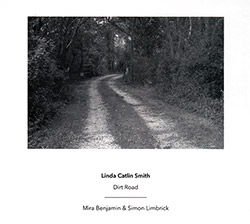
Canadian composer Linda Catlin Smith's extended composition for violin and percussion in 15 parts, performed by percussionist Simon Limbrick and violinist Mira Benjamin, a unique orchestration that reveals a journey of steady pace, tension and beauty.
In Stock
Quantity in Basket: None
Log In to use our Wish List
Shipping Weight: 3.00 units
EU & UK Customers:
Discogs.com can handle your VAT payments
So please order through Discogs
Sample The Album:
Simon Limbrick-percussion
Mira Benjamin-violin
Linda Catlin Smith-composer
Click an artist name above to see in-stock items for that artist.
Label: Another Timbre
Catalog ID: at97
Squidco Product Code: 22325
Format: CD
Condition: New
Released: 2016
Country: UK
Packaging: Cardboard Gatefold
Recorded at the University of Huddersfield, January 9th, 2016.
"An extraordinary journey for violin and percussion, stretching across 15 movements and over 68 minutes. Canadian composer Linda Catlin Smith is one of the best-kept secrets of experimental music, and 'Dirt Road' is one of her few concert-length pieces. Brian Olewnick writes "this striking, gorgeous album from Linda Catlin Smith is wonderfully played by Mira Benjamin (violin) and Simon Limbrick (percussion)....definitely check it out."-Another Timbre
"Linda Catlin Smith, a native New Yorker long resident in Toronto, writes music that is gentle, gradual and generally austere. On the cover of her latest release is a photograph of a Dirt Road, taken by Smith herself. A simple two-lane track, etched into the earth through repeated use and wheel-friction stretches to a bend, then disappears behind trees.
The music, a sequence of 15 episodes ranging in length from two and a half minutes to ten, has a lonesome kind of beauty. The contrasting instrumental voices of percussionist Simon Limbrick and violinist Mira Benjamin become subtly complementary as they meet on a shared path of frail continuities and slow metallic pulsing, wistful melodies and dull, trundling thuds.
Smith is a sharp observer of what William Carlos Williams identified as "imaginative qualities of actual things". When physical realities are addressed in her music they are invariably filtered through memory or anticipation, yearning or daydreams. On her previous CD, indicitavely entitled 'Thought and Desire', Smith's setting of a Shakespeare sonnet is performed with real sensitivity by pianist Eve Egoyan. That music artfully matches the poem's portrayal of two bodies caught within a web of supposition, as anxiety and consolation fluctuate within a love affair.
The title 'Dirt Road' might seem to call for music that is far more matter of fact, roughly textured and minimally linear, but its episodic structure and mobile alignments of violin and percussion actually suggest elusive states of mind rather than locatable stages on a familiar journey.
Smith is again involved with perceptions that are as volatile as the play of light, as ephemeral as a momentary distraction or fleeting recollection. Ambivalence resonates through the fabric of her music, making it haunting and special." -Julian Cowley, The Wire
Interview with Linda Catlin Smith
There are very few hour-long duos for violin and percussion; it's an unusual combination. Why did you choose those instruments? And did you always intend to compose such a long piece, or did it evolve in the process of composition?
Dirt Road started off as a commission from a choreographer for an hour-long work. I chose violin and percussion because I thought it was one of the most challenging combinations I could think of. It was also practical - I live with a percussionist (Rick Sacks) so I knew I had a willing performer for a longer work. But I was interested in the idea of putting two very unlike instruments together to see what I could do.
The piece ended up not being used for dance - by the time I had recorded the piece, the choreographer felt that her choreography needed to occur in silence - a decision I understood when I saw the work. So the piece ended up as a concert piece, and it has been performed several times. The length was something I was very interested in at that time - I had written several longish works in the years prior to Dirt Road, and just the year before I had written a 45 minute work for cello and piano (Ballad) which is also released on disc (World Editions). I wanted to feel I could take up space in a concert, rather than appearing (often) as the slow movement between faster and louder pieces on a varied program. This way, I could create a world for an evening that was all to itself, not juxtaposed with other worlds.
It's interesting that it was originally conceived as a dance piece, because I always feel that some of the movements have a balletic quality.
I wasn't aware of it, but it makes sense. As the piece was for dance originally, I must have wanted to give some moments that invited a certain kind of physical energy or movement...
Why the title Dirt Road? Does it refer to anything in particular?
I called the work Dirt Road because I felt I was working with material that was plain, simple, unadorned. It also implies, for me, the sense of being a bit off the beaten path. I like the image of solitude that it invokes, and the sense that there is not a lot happening. And yet when you walk in the country on a lonely path, there is always so much to see and to think and to feel.
I also think that parts of the pieces sound like folk music from a world that is related to ours but at one step removed. Do you listen to folk music at all?
I listened to a lot of folk music in my earlier life. When I was a teenager I was playing Irish and Appalachian folk music (on flute mostly) and I often went on Monday nights to the Irish Arts Centre where the best folk musicians in NY were playing late into the night. I was dancing a lot in English Country Dance groups in NY and I was a dancer in an ensemble devoted to 18th century dance. I love the lightness and transparency of that music and the slight looseness of the playing together. I also listened to a lot of Baroque music (I built a harpsichord from a kit when I was in high school, and I played harpsichord at university) and the texture and nuance of that music is a big part of me.
Could you say a bit more about your musical formation and how you came to experimental music?
I don't know if I think about whether music - any music - is experimental or not - I am more or less waiting to be surprised or put in a state of wonder. In my own work, the experiment is always about whether something will hold - usually I ask myself questions - can it be longer, can it repeat, can it have silence, can I put this in another register, can I make the harmony more ambiguous, can I add another layer...how thin or thick can it be, how dense or sparse? Are there sections or movements or is it somehow all one thing? Is it anything? Can I loosen it in some way? Can I get lost in it?
As for my musical formation, we had a piano at home, and I had piano lessons from a young age - before I could read. I was very lucky to have a composition teacher in high school - Allen Shawn - who gave me records to listen to, and showed me scores, and took my music seriously. At home we had lots of recordings - classical and jazz - and I listened to them all the time. I listened to music as I fell asleep - I was allowed one side of a record every night. I was so curious about music - I always wanted to hear something new. But at the piano, I would play the same chords over and over again, just to surround myself with a certain sonority. I still do that when I'm composing - to make sure the sound is what I want, to make sure it is somehow right.
That ability of music to surprise is certainly evident in Dirt Road, which turns and meanders in lots of unexpected ways. The 15 movements are numbered, but can be played in any order, so I suppose that putting the CD in random play mode would work well for the piece - or do you like to hear it in numerical order?
For me, the reason to write different movements is to have the chance to explore contrasting material and ideas. This allows for a kind of detour - taking a side road off the main road perhaps. Each movement is its own small world. I have made the order of movements flexible so performers can feel they can use as many or as few movements as they would like. I am open to alternative orders of movements, and of course when you change the order, the overall experience will have a slightly different sense of unfolding. This order felt right to me, but I can imagine the piece could work in all kinds of ways - one can always take a different route home...
Like many of your pieces, Dirt Road combines an intimate delicacy with a physicality that is probably only fully apparent in performance. Are those qualities that you consciously seek out, or do they just happen to recur in your music?
I am very drawn to the intimacy of music - I am aware of the feeling of sound almost as it goes in my ears. This aspect of 'touch' - the violin bow on the string, the lip on the mouthpiece, the finger on the keyboard - is what draws me to certain musicians; there is a quality of control and intimacy with sound that they bring to their instrument that has to do with imagination, with listening, and with a certain physicality - touch - in relation to sound. I like to compose music that invites these delicate, intimate qualities. I would say it is always in the background of my thinking.

The Squid's Ear!
Artist Biographies
• Show Bio for Simon Limbrick "Simon Limbrick's involvement in music embraces performance, composing and education.
He was a member of the cult systems orchestra The Lost Jockey and Man Jumping, recording for EG Editions and creating scores for leading dance companies, Second Stride, London Contemporary Dance, Rosemary Lee and Sue MacLennan. He has been in demand as a percussionist performing all over the world with the Nash Ensemble, Birmingham Contemporary Music Group, Endymion Ensemble, Composers' Ensemble and Fibonacci Sequence as well as recording with artists such as Alabama3, Gavin Bryars Pete Lockett and for Blue Note Records. He has been guest principal with the LSO and worked under conductors, Leonard Bernstein, Oliver Knussen, Simon Rattle and Tom Ades. He has featured on film and television including documentaries about Steve Reich and Kenneth MacMillan's award winning Judas Tree.Compositions created for him include works by Javier Alvarez, Brian Elias (Kenneth MacMillan's last ballet The Judas Tree), Vic Hoyland and Andrew Poppy. He has performed the world-premieres of solo pieces by James Dillon, Frederic Rzewski , Claude Vivier, Philip Cashian, Thea Musgrave, Harry de Wit, Howard Skempton, Michael Wolters and Ed Kelly. His solo performances have been broadcast by the BBC, RAI, Radio France, Dutch TV and radio. Recently, he performed his own concerto Bulls Yard and Stockhausen's Zyklus at the Sage, Gateshead,(see review) solo steel-pan in Brian Elias' Judas Tree at Royal Opera House, London, in 2010 and directed his mixed-media project, dot-machine, a web-based musical construction accessible on www.marimbo.com. He created a 24 hour long piece surfaces with the composer James Saunders, with financial assistance from the Arts Council of Great Britain and premiered at the Huddersfield Contemporary Music Festival in 2011. In education, Simon has led workshops since 1982, and been a returning resident artist in festivals and organisations, including Blackheath Concert Halls, Aldeburgh Music, Sound It Out , Spitalfields Festival. Workshop projects have been led by him throughout Europe. As a fully-qualified teacher, he has led Music and Performing Arts in Secondary Schools for five years. He has led school and community projects for Aldeburgh Music. As Artistic Director, he helped establish In Harmony Norwich, creating mixed-ability orchestral pieces for professional and young student players. Until the School of Music closed in June 2014, he was Director of 'Musician in the Community' and 'Creative Leadership' courses at University of East Anglia.
As a composer, Simon has gained an MA in Electroacoustic Composition from City University and collaborated as a composer on a number of large scale works, including a project at Fort Dunlop, Birmingham, with Rosemary Lee and site-specific work with Dutch composer/sound sculptor Harry de Wit in Holland and Brussels.He has produced film scores for TV and film festivals and composed music for theatre productions at the National Theatre and Royal Shakespeare Companies. Groups he has created pieces for include Mary Wiegold's Songbook, Roger Heaton Group, Ensemble Bash, Network of Sparks, Endymion Ensemble, Richard Durrant, Ritmatic, Hooloo. The Brighton Youth Orchestra performed machina lumina , for string ensemble and vibraphone throughout 2009. His composition Machine for Living for Landesmusikrat/Splash was recorded at Deutschlandradio. He has produced recordings for wergo and others.Currently composing a large piece for jazz brass and marimba. He has created the CDs, Steam, Hooloo, Clean, Ritmatik, Dot-Machine, Hammer, Rise and Fall, , between and Relay, which are frequently broadcast and available on well-known download sites. NEW RELEASE of a double CD RELAY, of contemporary steel-pan music in Sept 2014. Sound Composer for the film 3 Church Walk by the director Emily Richardson premiered on 18th Oct 2014 at The London Festival, BFI, London." ^ Hide Bio for Simon Limbrick • Show Bio for Mira Benjamin "Mira Benjamin is a Canadian violinist, researcher and new-music instigator. She performs new and experimental music, with a special interest in microtonality & tuning practice. She actively commissions music from composers at all stages of their careers, and develops each new work through multiple performances. Current collaborations include new works by Anna Höstman, Scott McLaughlin, Amber Priestley, Taylor Brook and James Weeks. Since 2011, Mira has co-directed NU:NORD - a project-based music and performance network which instigates artistic exchanges and encourages community building between music creators from Canada, Norway & the UK. To date NU:NORD has engaged 79 artists and commissioned 62 new works. Through this initiative, Mira hopes to offer a foundation from which Canadian artists can reach out to artistic communities overseas, and provide a conduit through which UK & Norwegian artists can access Canada's rich art culture. Originally from Vancouver, British Columbia, Mira lived for ten years in Montréal, where she was a member of Quatuor Bozzini. Since 2014 she has resided in London (UK), where she regularly performs with ensembles such as Apartment House, Decibel, and the London Contemporary Orchestra Soloists, and is currently the Duncan Druce Scholar in Music Performance at the University of Huddersfield. Mira is the recipient of the 2016 Virginia Parker Prize from the Canada Council for the Arts. The prize is awarded annually to a Canadian musician in recognition of their contribution to the artistic life in Canada and internationally." ^ Hide Bio for Mira Benjamin • Show Bio for Linda Catlin Smith "Linda Catlin Smith grew up in New York and lives in Toronto. She studied music in NY, and at the University of Victoria (Canada). Her music has been performed and/or recorded by: Tafelmusik, Other Minds Festival, California Ear Unit, Kitchener-Waterloo, Victoria and Vancouver Symphonies, Arraymusic, Tapestry New Opera, Gryphon Trio, Via Salzburg, Evergreen Club Gamelan, Turning Point Ensemble, Vancouver New Music, and the Del Sol, Penderecki, and Bozzini quartets, among many others; she has been performed by many notable soloists, including Eve Egoyan, Elinor Frey, Philip Thomas, Colin Tilney, Vivienne Spiteri, and Jamie Parker. She has been supported in her work by the Canada Council, Ontario Arts Council, Chalmers Foundation, K.M. Hunter Award, Banff Centre, SOCAN Foundation and Toronto Arts Council; in 2005 her work Garland (for Tafelmusik) was awarded Canada's prestigious Jules Léger Prize. In addition to her work as an independent composer, she was Artistic Director of the Toronto ensemble Arraymusic from 1988 to 1993, and she was a member of the ground-breaking multidisciplinary performance collective, URGE, from 1992-2006. Linda teaches composition privately and at Wilfrid Laurier University, Waterloo, Canada." ^ Hide Bio for Linda Catlin Smith
11/20/2024
Have a better biography or biography source? Please Contact Us so that we can update this biography.
11/20/2024
Have a better biography or biography source? Please Contact Us so that we can update this biography.
11/20/2024
Have a better biography or biography source? Please Contact Us so that we can update this biography.
Track Listing:
1. Untitled 3:29
2. Untitled 7:00
3. Untitled 4:58
4. Untitled 3:19
5. Untitled 3:03
6. Untitled 3:22
7. Untitled 6:02
8. Untitled 4:56
9. Untitled 4:30
10. Untitled 5:36
11. Untitled 2:27
12. Untitled 4:22
13. Untitled 2:15
14. Untitled 9:37
15. Untitled 3:27
Compositional Forms
Duo Recordings
Stringed Instruments
Percussion & Drums
London & UK Improv & Related Scenes
New in Compositional Music
Canadian Composition & Improvisation
Search for other titles on the label:
Another Timbre.

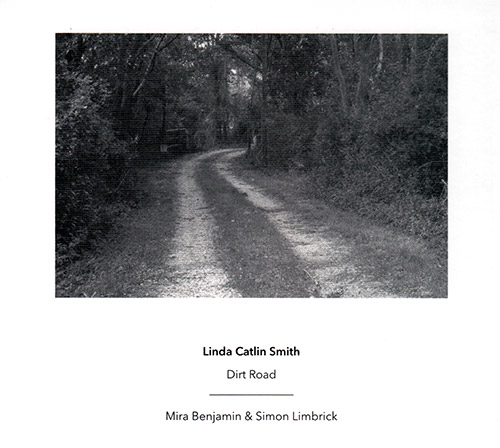
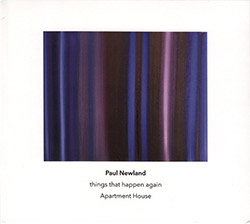

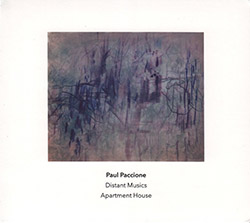


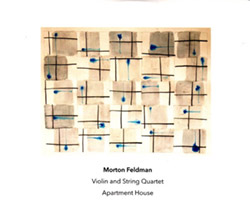
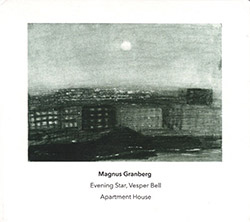
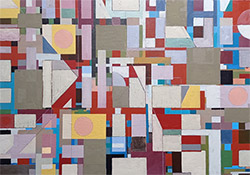

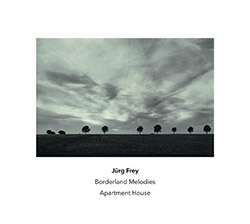


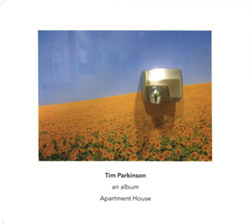

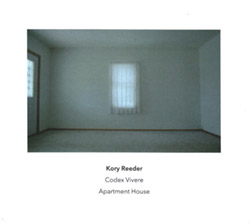
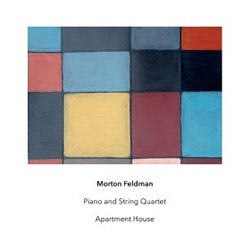
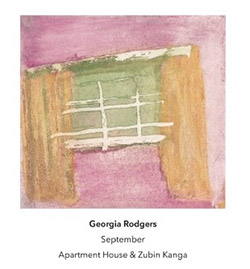
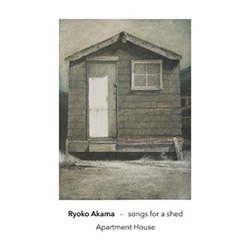

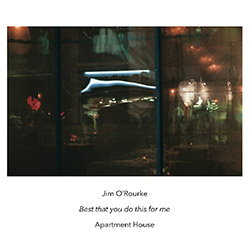
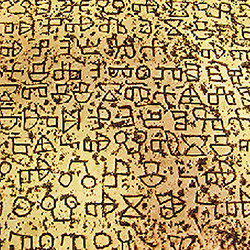

















![Barker / Parker / Irabagon: Bakunawa [VINYL]](https://www.teuthida.com/productImages/misc4/35533.jpg)
![Blaser, Samuel / Marc Ducret / Peter Bruun: Dark Was The Night, Cold Was The Ground [VINYL 10-inch]](https://www.teuthida.com/productImages/misc4/35492.jpg)










![Warren, Kenny (Warren / Hoffman / Ellman): Sweet World [VINYL]](https://www.teuthida.com/productImages/misc4/35451.jpg)


![Blake, Ran / Dave Knife Fabris: Live Amsterdam 2006, First Visit [CD + POSTCARDS]](https://www.teuthida.com/productImages/misc4/35275.jpg)
![Sanna, Claudio: Compositori Sardi Contemporanei II [2 CDs]](https://www.teuthida.com/productImages/misc4/35317.jpg)












![Nevai, Nandor: <<The PRICE of FRONTIER>> Book 1: FULK [BOOK + 4 CDs]](https://www.teuthida.com/productImages/misc4/35464.jpg)
![Nevai, Nandor: <<The PRICE of FRONTIER>> Book 2: MARTIAL [BOOK + 4 CDs]](https://www.teuthida.com/productImages/misc4/35465.jpg)
![Nevai, Nandor: <<The PRICE of FRONTIER>> Book 3: JASSOM [BOOK + 4 CDs]](https://www.teuthida.com/productImages/misc4/35466.jpg)
![Nevai, Nandor: <<The PRICE of FRONTIER>> Book 4: HARD-WON [BOOK + 4 CDs]](https://www.teuthida.com/productImages/misc4/35467.jpg)

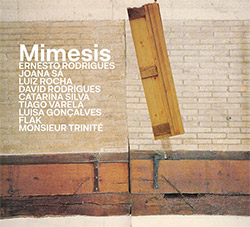




![DNS: Taking Big Bites Of The Khandas Three Cafes Deep [2 CDs]](https://www.teuthida.com/productImages/misc4/35334.jpg)




![Cleaver, Gerald: The Process [VINYL]](https://www.teuthida.com/productImages/misc4/34966.jpg)




![Alva Noto: HYbr:ID II [VINYL 2 LPs]](https://www.teuthida.com/productImages/misc4/35201.jpg)

![Baron, Derek / Luke Martin: Distinct and Concealed [CASSETTE + DOWNLOAD]](https://www.teuthida.com/productImages/misc4/35079.jpg)

![Lyle, Erica Dawn : Colonial Motels [CASSETTE + DOWNLOAD]](https://www.teuthida.com/productImages/misc4/35080.jpg)







![Alva Noto: HYbr:ID III [VINYL 2 LPs]](https://www.teuthida.com/productImages/misc4/35011.jpg)
![Kubisch, Christina / Trondheim Voices: Stromsanger 2022 For Six Voices And Electromagnetic Waves [VINYL]](https://www.teuthida.com/productImages/misc4/34628.jpg)








![Zurria, Manuel: Fame di Vento [3 CDs]](https://www.teuthida.com/productImages/misc4/35167.jpg)

![Granberg, Magnus / Nattens Inbrott / Skogen: Holde Traume, Kehret Wieder! [2 CDs]](https://www.teuthida.com/productImages/misc4/35038.jpg)
![Frey, Jurg: Outermost Melodie [2 CDs]](https://www.teuthida.com/productImages/misc4/35039.jpg)

![Pavone, Jessica: Reverse Bloom [VINYL]](https://www.teuthida.com/productImages/misc4/34895.jpg)




![Modney (Modney / Wooley / Gentile / Roberts / Pluta / Symthe / ...): Ascending Primes [2 CDs]](https://www.teuthida.com/productImages/misc4/34852.jpg)







![Elephant9 with Terje Rypdal: Catching Fire [VINYL 2 LPs]](https://www.teuthida.com/productImages/misc4/35355.jpg)
![Deerlady (Obomsawin, Mali / Magdalena Abrego): Greatest Hits [VINYL]](https://www.teuthida.com/productImages/misc4/34876.jpg)




![Haino, Keiji: Black Blues [2 CDs]](https://www.teuthida.com/productImages/misc4/35109.jpg)



![Surplus 1980: Illusion of Consistency [CD]](https://www.teuthida.com/productImages/misc4/35069.jpg)
![Staiano, Moe: Away Towards the Light [VINYL + DOWNLOAD]](https://www.teuthida.com/productImages/misc4/35037.jpg)
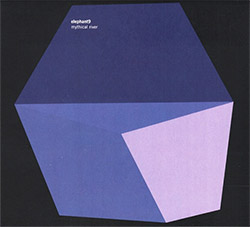



![Caveira (Gomes / Sousa / Abras / Ferrandini): Ficar Vivo [VINYL]](https://www.teuthida.com/productImages/misc4/34643.jpg)
![Gregg, J. J. / David Van Auken: Lunar Prairie [CD w/ DOWNLOAD]](https://www.teuthida.com/productImages/misc4/34611.jpg)

![Coultrain: Mundus [VINYL]](https://www.teuthida.com/productImages/misc4/32439.jpg)
![Mattin: Songbook #6 [VINYL]](https://www.teuthida.com/productImages/misc4/27317.jpg)
![Punkappella: Wake Up [7-inch VINYL]](https://www.teuthida.com/productImages/misc4/17519.jpg)
![Residents, The: WARNING: UNiNC.: Live And Experimental Recordings 1971-1972 [VINYL 2 LPs]](https://www.teuthida.com/productImages/misc4/31521.jpg)
![Coultrain: Phantasmagoria [VINYL]](https://www.teuthida.com/productImages/misc4/30142.jpg)
![Lennon, Sean Ono: Asterisms [VINYL]](https://www.teuthida.com/productImages/misc4/34517.jpg)

![Rotem Geffen: The Night Is The Night [VINYL]](https://www.teuthida.com/productImages/misc4/34631.jpg)
![Coley, Byron: Dating Tips for Touring Bands [VINYL]](https://www.teuthida.com/productImages/misc4/17906.jpg)

![Lost Kisses: My Life is Sad & Funny [DVD]](https://www.teuthida.com/productImages/misc4/lostKissesDVD.jpg)